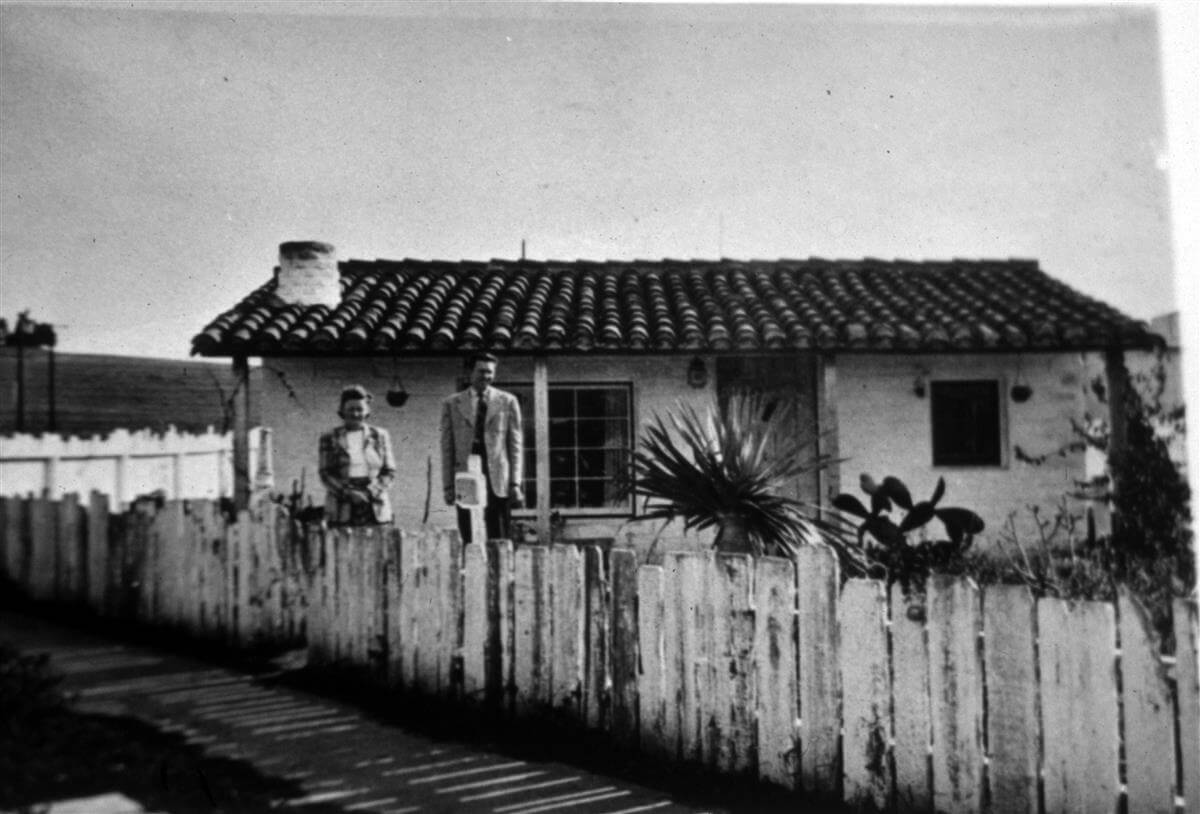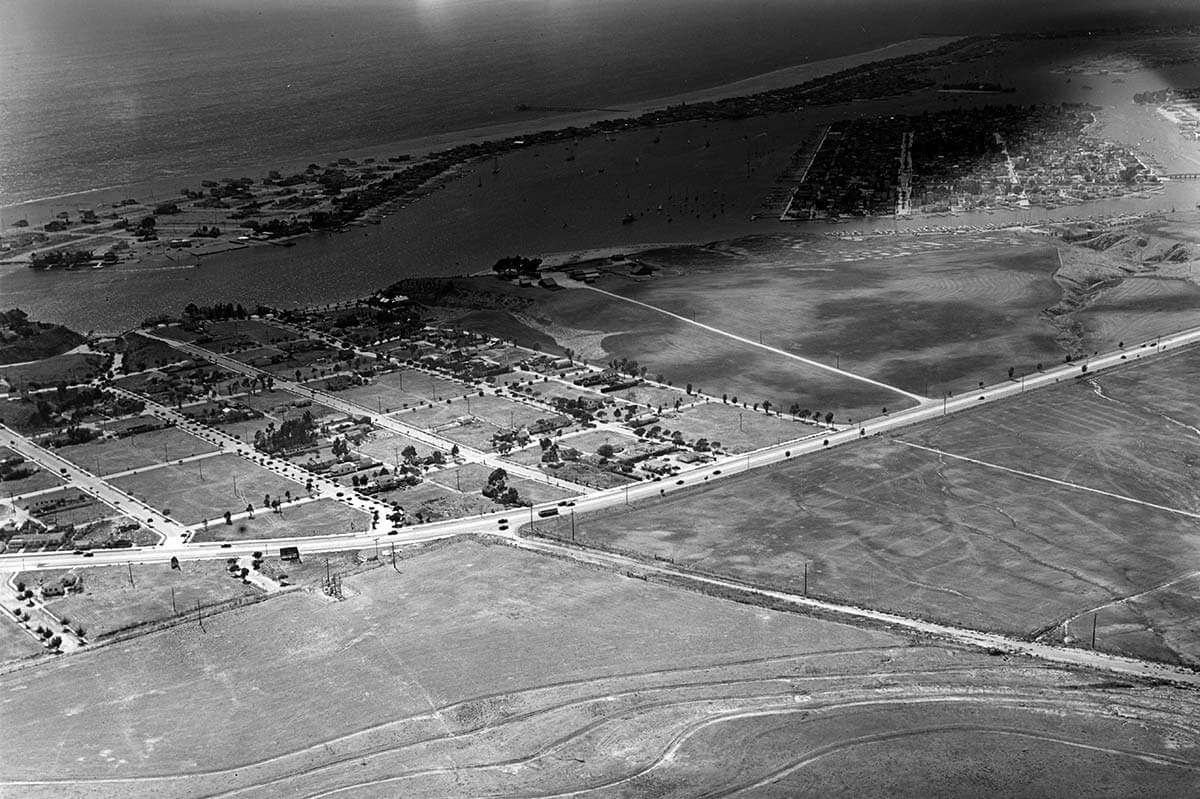When Nobody Bought $100 Lots in Corona del Mar

Paul Wormser, Library Director
The oldest structure at Sherman Library & Gardens is a single-room adobe house built by Lawrence and Pauline Lushbaugh in the late 1930s. The Lushbaugh’s story is interesting: the young couple bought a plot of land, and taught themselves how to make fired-adobe brinks to build their own home. Yet if a single element of the story fascinates people, it is this: the Lushbaughs bought the land for their house from the City of Newport Beach for $600.00, an amount that would not cover the cost of a square foot of a typical house today.
Selling land in Corona del Mar in the years before the World War II was challenging at best. Lots that now sell for millions of dollars were priced at a few hundred dollars, remaining unsold for years. An aerial photograph in Sherman Library’s collections is graphic evidence. Taken in 1940, the photograph shows a scattering of homes and business in the flower streets. Whole blocks were nearly vacant. In fact, in 1940 the City of Newport Beach owned a considerable number of Corona del Mar “tax lots,” which it acquired when the owners failed to pay property taxes.
The man who first envisioned Corona del Mar – and named it – was George E. Hart, a Los Angeles real estate salesman. In 1904, Hart bought 706 acres of land for $125.00/acre from The Irvine Company. One 1904 advertisement announced people could buy lots starting at $100. At the time he made the deal, Hart expected that the Pacific Electric Railway, the so-called Red Cars, would extend as far as Corona del Mar. However, when the railway was extended south in 1906, the terminus was the Balboa Peninsula, not Corona del Mar. Corona del Mar had a geography problem – the only way to the new subdivision was by boat from Balboa or by a road owned by The Irvine Company. When it was clear that the Pacific Electric would not reach Corona del Mar, Hart tried to cut his losses by deeding back 359 acres to The Irvine Company. In 1907, he built the Hotel Del Mar at the corner of present-day Carnation and Seaview, to encourage people to visit – and he hoped – buy land. By 1915, Hart was ready to wind up his Corona del Mar adventure.
Hart sold his remaining land, including the Hotel Del Mar to the F. D. Cornell Co. The F. D. Cornell Co. tried to rename the tract Balboa Palisades, to take advantage of better-know Balboa. The Hotel Del Mar was renamed the Palisades Tavern. But it did not work. By 1920, Corona del Mar had fewer than 50 homes. Moreover, those few residents resisted the new Balboa Palisades name, which was later abandoned.
The F. D. Cornell Co. sold the Palisades Tavern in 1925 to a group of investors who formed the Balboa Palisades Club. The investors promoted the club in the characteristically overblown language of real estate ads at the time. “Situated atop the Balboa Palisades will be the new Club house as planned, commanding an unsurpassed view . . . a tumbling, sapphire sea breaking upon a beach dotted with multicolored tents and parasols, and people, young and old, pleasure bent in the life-giving, golden sunshine . . . here at this rainbow’s end is the Balboa Palisades Club. Here discriminating families may enjoy its many advantages in safety and seclusion.”
The investors probably expected a real estate boom once Coast Highway opened in 1926. But, the boom did not materialize, and within a few years the Great Depression took hold. It would not be until after World War II that Corona del Mar land would sell at a premium.




